So it was a bit of an amphibious day yesterday, meaning that’s what I was finding around Walkabout Estates Plus. We’ll start with the greenhouse:

While, as I said before, the property is absolutely overrun with anoles, they tend to be dry and not leave any evidence of their passing, so while I have found nothing conclusive within these strange, faintly muddy markings on the sides of the new greenhouse, I’m inclined to say that they were made by a treefrog – perhaps more than one, because really, they were literally covering several of the panes, and this was on the outside, so not any that got trapped within. I checked, last night and tonight, but didn’t find any frogs around the greenhouse.
I did find one, a tiny one, on the liriope along the front walk, though.
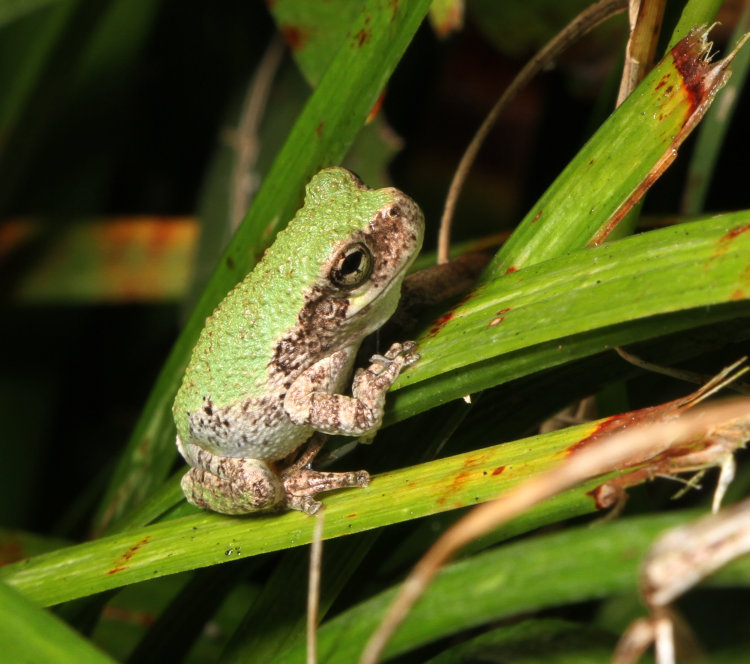
While the green patch is bright and obvious, this is instead a Copes grey treefrog (Dryophytes chrysoscelis,) and a little one at that, probably just a few weeks out of tadpole stage – the key identifier for the grey treefrogs is the pale patch under the eye, and while there is another species with the same patch (the common grey treefrog,) they’re almost unheard of in North Carolina. The green will disappear as it gets older and begins to hide on trunks rather than leaves.
As I came out the front door yesterday, I saw a tiny black thing hopping across the bricks and quickly stooped to grab it, then sought The Girlfriend out so she could hold it for pics. She watched my cupped-hand approach with some trepidation, not knowing if I had something cute (like a frog) or creepy (like a snake,) but agreed to hold this guy once she saw it.
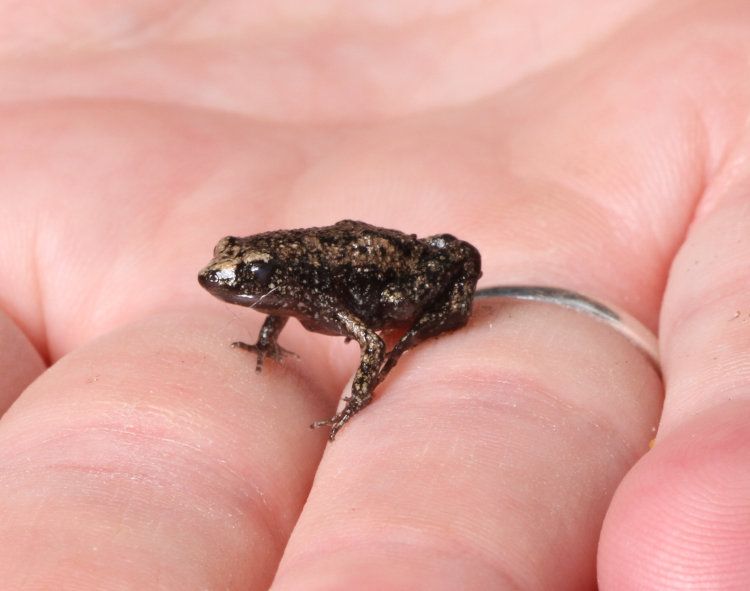
The thing is, I don’t know what species this is at all; it’s likely a juvenile, especially since it resembles none of the chorus frogs that might be found in the area, but the guides that I have all show adult specimens. I’m vaguely suspicious that it’s a young narrowmouth toad, from the dark skin and snout shape, but that’s the best I can offer right now.
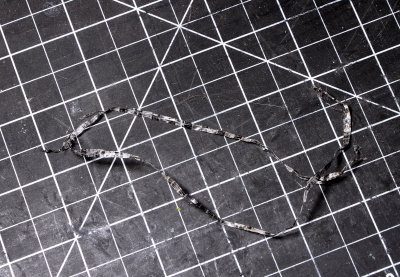 Yesterday as we went past a patch of bare earth, I spotted something moving and realized that it was a toad trying to bury itself, but it soon ceased any movement as we drew close. I’m a guy, so I took a small handful of sandy soil and deposited it onto the back of the toad, to protect it from the hot sun, and continued on with our tree-transplanting tasks. Today, I stopped by the same spot and could still see it there, so I went to scoop it up for a closer examination, because I rarely saw toads that dark. Only, it wasn’t coming up, and appeared to be anchored by a leg (I was not tugging with any force at all – I’m circumspect.) Eventually I determined that one hind leg was wrapped tightly with something well-anchored in the soil, and with some digging I freed this, finding it to be a scrap of old nylon webbing; what I had taken the day before to be efforts to bury itself were actually efforts to free itself from this tourniquet. That meant that it had been there at least a full day, and the hind leg was angled badly and discolored. Wanting to evaluate the condition as well as get some detailed pics, I brought the toad inside and eventually set it up in a makeshift terrarium, since all of my decent options for housing are still two hours away. But you need to see these eyes at least.
Yesterday as we went past a patch of bare earth, I spotted something moving and realized that it was a toad trying to bury itself, but it soon ceased any movement as we drew close. I’m a guy, so I took a small handful of sandy soil and deposited it onto the back of the toad, to protect it from the hot sun, and continued on with our tree-transplanting tasks. Today, I stopped by the same spot and could still see it there, so I went to scoop it up for a closer examination, because I rarely saw toads that dark. Only, it wasn’t coming up, and appeared to be anchored by a leg (I was not tugging with any force at all – I’m circumspect.) Eventually I determined that one hind leg was wrapped tightly with something well-anchored in the soil, and with some digging I freed this, finding it to be a scrap of old nylon webbing; what I had taken the day before to be efforts to bury itself were actually efforts to free itself from this tourniquet. That meant that it had been there at least a full day, and the hind leg was angled badly and discolored. Wanting to evaluate the condition as well as get some detailed pics, I brought the toad inside and eventually set it up in a makeshift terrarium, since all of my decent options for housing are still two hours away. But you need to see these eyes at least.
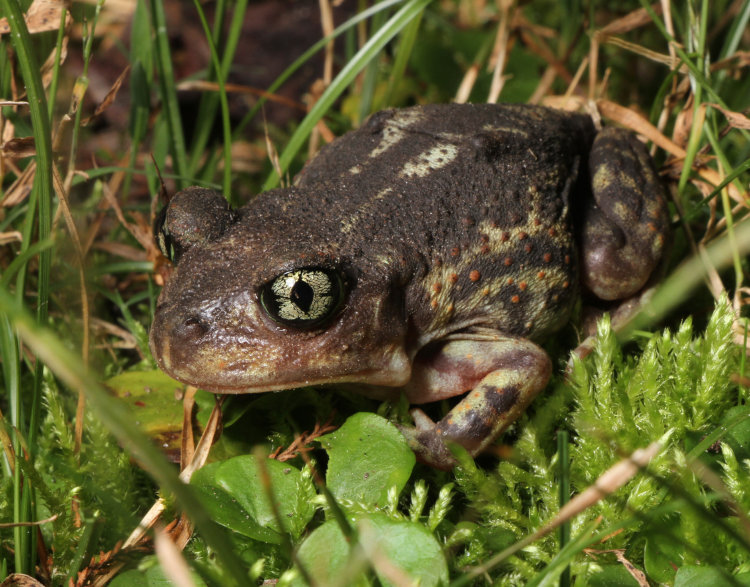
This is an eastern spadefoot (Scaphiopus holbrookii,) a toad not to be found in our old area of central NC, but closer to the coast the conditions are more conducive to them since they prefer sandier soils. Spadefoots are also one of the few species of toad with vertical pupils, and the irises are not always this green; let’s have a closer look:
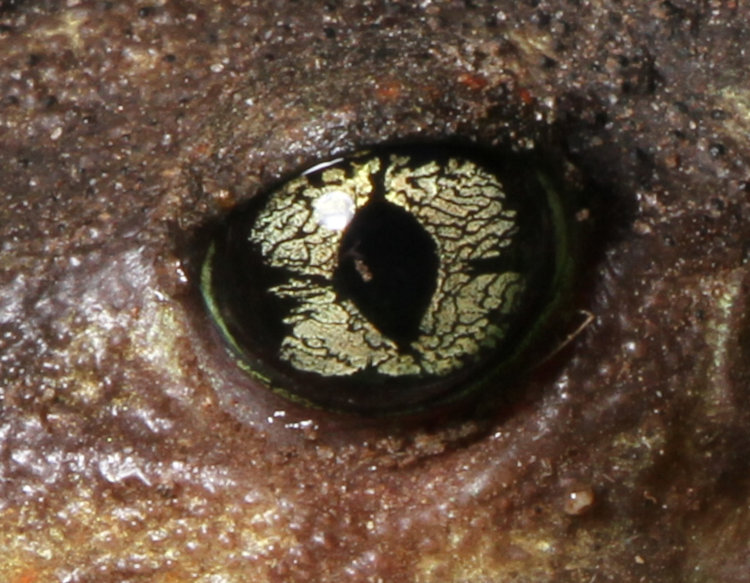
Those are perhaps the best-looking eyes of any species I’ve photographed, and they get even better from the front:
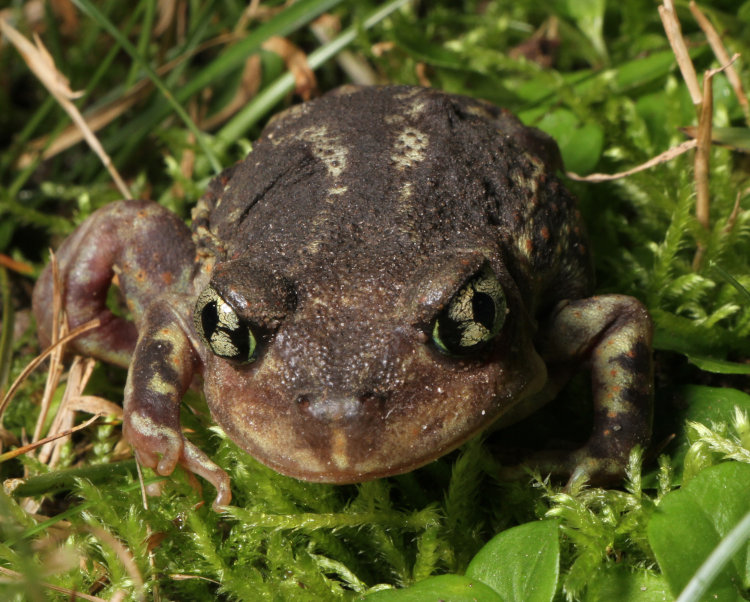
I wouldn’t be surprised if this is where the writers of Futurama got the inspiration for the hypnotoad, and certainly, once I saw this perspective I knew that I needed a pic. You can see the right hind leg sitting out at an awkward angle, but here’s a better view:
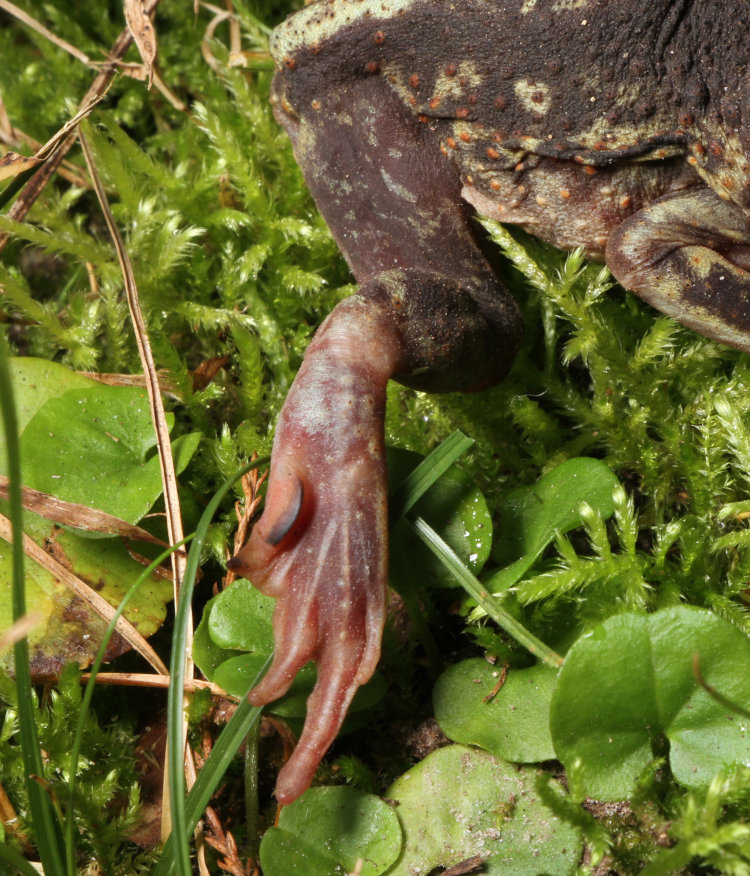
The dark ridge along the back edge of the foot is what gives the species its common name, and helps them dig backwards into their burrows, where they spend much of their time. But it shouldn’t be sitting out at this angle, and even after several hours of recovery time, the toad shows no signs of being able to use it, so I fear the worst. You can even make out the groove that the nylon webbing left, right where the coloration changes going up the leg.
The toad is otherwise alert and responsive, and can move around despite the hindrance of this leg, but I’m certain that it’s at a distinct disadvantage in avoiding predators, capturing meals, and even maintaining its burrow. Spadefoots spend most of their time underground, and often “forage” by simply coming to the mouth of their burrow and waiting for food (spiders, crickets, ants) to happen past. So the chances are that this guy would simply die quickly in the wild from being unable to function properly, if complications from that leg injury don’t accomplish this faster. I’m not a fan of keeping wild animals as captives, but I’m thinking this might be the best thing for this guy, provided I can give it enough of a habitat to be comfortable. Or I may contact the university the next city over (about a half-hour away) and see if their biology department wants to tackle this. Even if the leg could be ‘set,” I doubt any veterinarian in the area would know how to, saying nothing of course of what they’d charge me. Even the licensed wildlife rehabilitators within an hour of here only take small mammals.
So, I’m undecided right now, but I’ll settle on something within a day or so, and let you know where it’s going.



















































